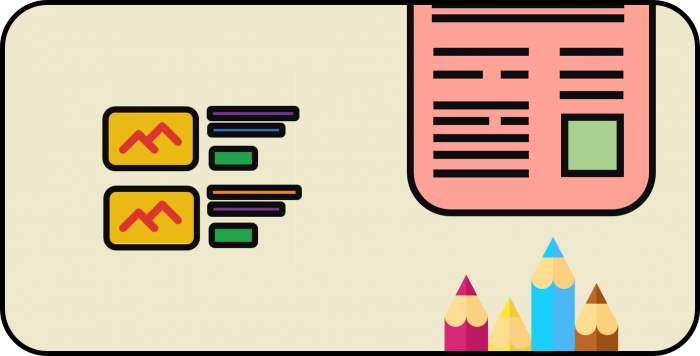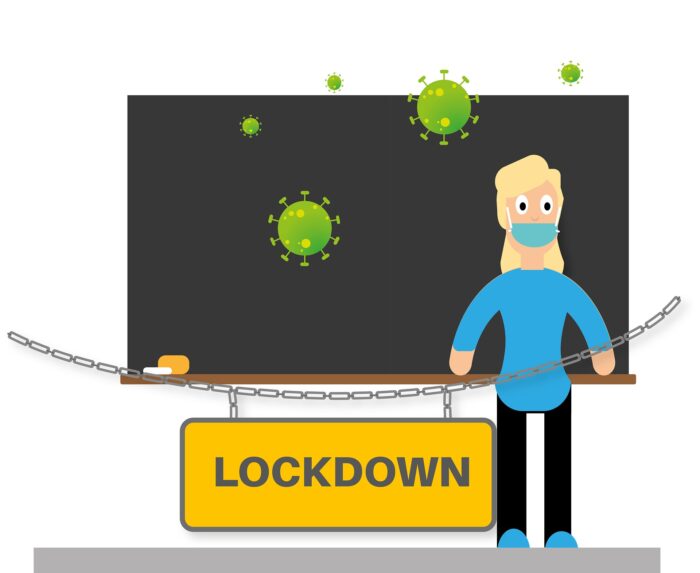Descriptive writing, the simplest form of writing, refers to using sensory details to write about a topic or subject. It is also one of the most widely adopted forms of writing. Every piece of writing includes some text that is descriptive in nature. This style of writing is useful for providing descriptions of people, places, events, situations, etc. to a reader. Academic assignments with action verbs, such as identify, summarize, record, etc., are associated with descriptive writing.
Characteristics of Descriptive Writing
A piece of descriptive writing has certain unique attributes. Some are presented below. Readers may go through them to better understand the examples that follow.
- Descriptive writing is clear, unambiguous, and focused. The central idea of the writing piece is reflected in the content.
- Descriptive text is powerful enough to bring the imagination of a reader into play. The reader is able to visualize an impression of what is vividly described in the writing piece. A descriptive piece carries information for a reader and conveys it imaginatively.
- A piece of descriptive writing is well-structured. A logical flow of expression makes the content appealing to the reader.
- The level of language and vocabulary is fairly simple. Descriptive writing also includes examples and analogies. This helps cut down verbosity, improve clarity, and make the content more engaging.
Sample Descriptive Writings
Presented below are a few samples of descriptive writing. Their attributes as a descriptive writing piece are also discussed and highlighted.
Example 1
Writing Sample 1 presents the first-person description of an apartment. Readers may go through the sample and observe how the attributes of descriptive writing reflect the content in the writing piece.
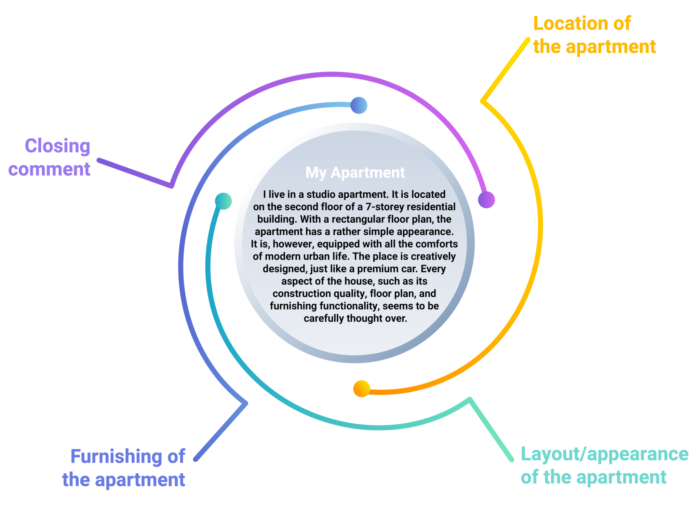
Observations
- The sample has a clear focus: the apartment.
- The phrases “simple appearance”, “comforts of the modern urban life”, and “just like a premium car” help build the imagination of the reader.
- No difficult words are used in the sample text.
- The flow of the content is quite logical: location of the apartment→ layout/appearance of the apartment→ furnishing of the apartment→ closing comment.
Example 2
Writing Sample 2 presents a short piece of descriptive text on the Statue of Liberty. Readers may observe how the essential attributes of descriptive writing apply to the sample piece.
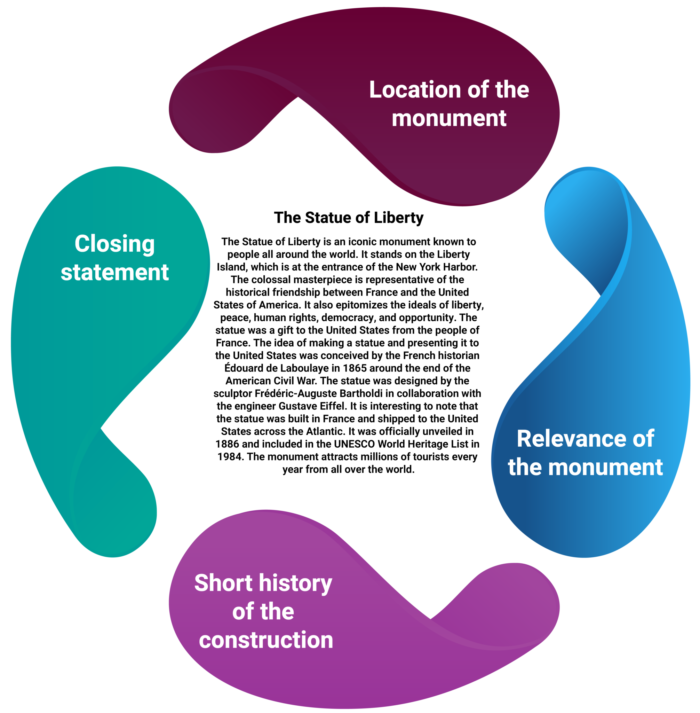
Observations
- The piece focuses on providing general information about the Statue of Liberty.
- The phrases ”iconic monument” and “colossal masterpiece” help the reader get an idea about the kind of monument the Statue of Liberty is.
- The vocabulary in the writing piece is simple and easily understandable.
- The flow of content is rational: location of the monument→ relevance of the monument→ short history of the construction→ closing statement.
Example 3
Writing Sample 3 presents another short description of the Statue of Liberty. Readers may observe that though the subject of writing samples 2 and 3 is the same, the focus is completely different. The attributes of descriptive writing, however, still hold true.
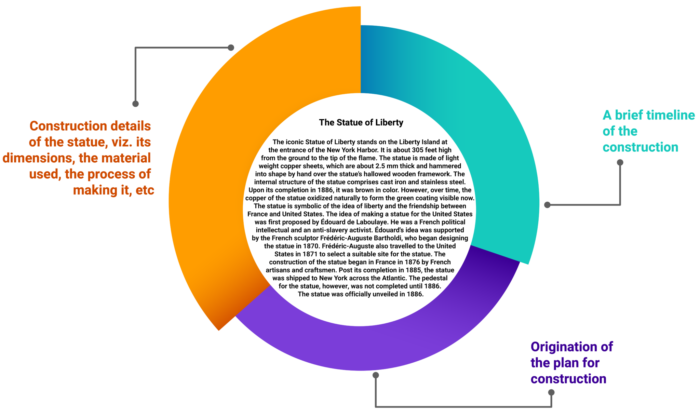
Observations
- The focus of the text is on the different aspects related to the construction of The Statue of Liberty.
- The description is informative and highlights several important aspects, such as the materials used for making the statue, the process of making it, the timeline of construction, etc.
- The vocabulary is fairly simple and straightforward.
- Though the sample does not have a clear closing statement, the flow of content is logical: construction details of the statue→ origination of the plan for construction → a brief timeline of the construction.
Example 4
Writing Sample 4 presents a short first-person description of a backpack. Readers may observe how the attributes of descriptive writing apply to the write-up.
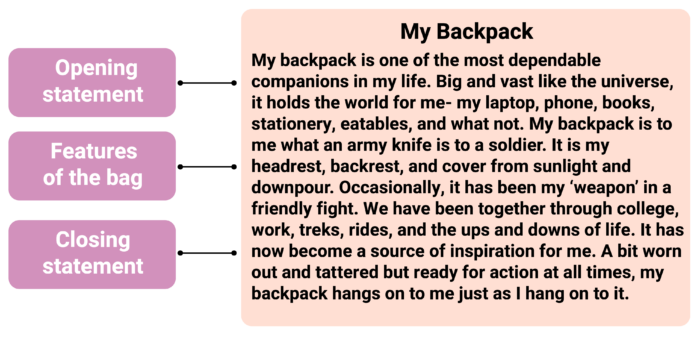
Observations
- The focus of the text: the backpack.
- The phrases “Big and vast like the universe”, “what an army knife is to a soldier”, and “ups and downs” point to different qualities of the bag, namely spaciousness, versatility, and toughness.
- The vocabulary is fairly simple and can be understood effortlessly.
- The flow of content: opening statement→ features of the bag (spacious, versatile, tough)→ closing statement.
- The writing piece is lively; it seems that there is a conscious attempt made by the writer to ‘personify’ the backpack.
- The closing statement of the writing piece is impactful and condenses the entire description into itself.
Discussion
Each sample presented here has a few distinct features that make it a piece of descriptive writing. Readers may attempt writing similar short pieces on topics of general interest. Writing is an important skill. It helps improve an individual’s understanding of a topic and develops vocabulary and articulation skills.
As suggested by the name itself, descriptive writing involves describing the subject of writing. When it comes to describing, the content may not be restricted to the physical aspect of the subject of writing. However, it should also involve opinions regarding the subject matter. Including both the physical facts and the writer’s opinion in the writing makes the piece engaging and useful to read. A writer should try to involve as many sensory details as possible to visualize the subject matter in the readers’ heads. If kept concise, informative, and strongly opinionated, a simple piece of writing can be transformed into good descriptive writing.
References:
- Kathleen Jones White Writing Center at Indiana University of Pennsylvania.
- The Writing page at The University of Sydney website.
- 5 Examples of How to Write a Good Descriptive Paragraph at ThoughtCo.
Image Credits:
Icon made by Smashicons from www.flaticon.com
This article is part of a series of articles on Writing.
For further reading related to pedagogy and education standards,
please visit the blog pages at Evelyn Learning.
Create.Engage.Inspire

